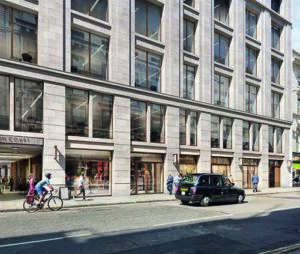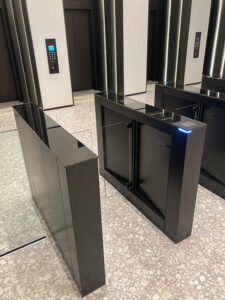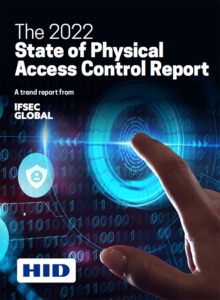Tim Northwood, General Manager at Inner Range, offers a view on how businesses can reboot their access control security systems to cater for a safer environment as workers return to offices.
The much anticipated ‘return to the office’ this summer after months of lockdown and home working has rightly prompted many employers and commercial landlords to think again about the access and security systems they have in place to help create safer working environments.
Reducing crowding, minimising touch-points and keeping accurate tabs on who is where on site are high on the agenda, and many will be looking to change or upgrade existing access and security systems to help meet these new needs as workers gradually return.
What’s more, with hybrid working looking like it will be the norm in many organisations, it’s expected that some will chose to re-locate to multi-tenant offices where robust cyber security, including between tenants, becomes even more important. Here’s what to consider if you, or your clients, are looking to reboot their access and security system.
Why integrate?
Pre-COVID, site managers may have managed with a relatively straightforward access and intruder detection system integrated with CCTV. But the benefits of more sophisticated integration are significant, especially when you are managing thousands of users a day.
For starters, one integrated system means less cabling and fewer systems to maintain and service. But more importantly, integration allows for a much more superior system including providing site managers with more information, all in one place. It can also allow for intelligent ‘cause and effect’ monitoring, such as CCTV footage automatically appearing if a door is left open or another alert is triggered. All of which makes it easier for security managers to quickly and efficiently deal with situations on site.
Integration also offers the opportunity to create highly bespoke solutions. For example, if you want high level lift control that automatically directs users to the fastest lift for their home floor, to use keyless bike lockers, or for users to be able to park their cars easily via ANPR, including recognising ‘priority’ users, such as those with a disability or executives, or for a complex lockdown protocol in the case of an emergency. All this is possible with an intelligent access control and security system.
Trouble-free access for users
For users, integrated access control means they can use their smartcard or mobile phone to open doors, call lifts, enter car parks and even pay for drinks, snacks and meals with almost no touch points or hold-ups. They don’t need a collection of keys and passwords or PINs. One card, or phone, opens everything they need. Even Two Factor Authentication (2FA) usually only requires users to have a phone, so you can still layer on extra security if you need it, with minimal fuss for users.
Manging visitors
Integrating visitor management software with your access control system has many benefits, especially for offices with many different tenants. Each individual company can create its own visitor passes without having to go through a central security team, and these can be sent to visitors digitally and appear automatically at the right date and time on their phone with a QR code. The passes include access information about floors, doors and other access points the visitor will need to reach, and ensures they can’t go anywhere else in a shared office block.


 A new access and security system was recently installed at 77 Coleman Street in the City of London by Antron Security as part of a complete refurbishment of the luxury multi-tenant office.
A new access and security system was recently installed at 77 Coleman Street in the City of London by Antron Security as part of a complete refurbishment of the luxury multi-tenant office.  Robust cyber security
Robust cyber security